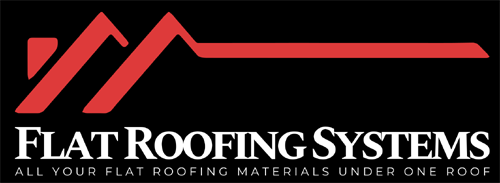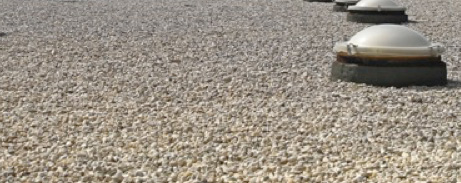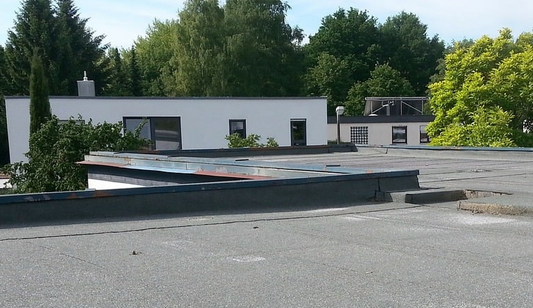1. What is PVC single ply roofing membrane?
PVC single ply roofing membrane is a flexible plastic sheet made from polyvinyl chloride, reinforced with polyester or fibreglass for use on flat roofs . These membranes consist of pliable plastic sheets that are heat-welded together during installation to create a smooth, waterproof barrier . The membrane is typically composed of two layers of PVC with polyester material in between for additional reinforcement . PVC membranes are chemically treated to be resistant to bacteria, heat, fats, and oil, as well as UV stable. They offer exceptional durability and waterproofing capabilities for commercial and residential flat roof applications.
Read more: What is PVC single Ply roofing?
2. How long does a PVC flat roof last?
A properly installed PVC flat roof typically lasts 20-30 years, with some higher-quality membranes extending up to 35 years or more. Most manufacturers offer warranty coverage ranging from 15 to 30 years, depending on the membrane thickness and installation quality .The lifespan depends on factors such as material quality, professional installation, environmental conditions, and regular maintenance . Modern PVC flat roof materials are engineered to resist extreme weather conditions, UV degradation, and temperature fluctuations without rotting, rusting, or corroding . With proper maintenance and quality installation, some PVC systems can provide service life in excess of 35 years .
Read more: How long does PVC Single ply roofing last?
3. What are the main benefits of PVC roofing membranes?
PVC roofing membranes offer excellent waterproofing properties with superior resistance to UV radiation, chemicals, and fire . They provide energy efficiency through reflective white surfaces that can reduce cooling costs by up to 40% annually. The heat-welded seams create bonds stronger than the membrane itself, ensuring watertight and long-lasting roofing systems . PVC membranes are lightweight, making them suitable for both new construction and existing roof renovations without adding significant structural load . They also offer excellent chemical resistance, flexibility in temperature fluctuations, and are inherently recyclable.
4. How much does PVC single ply roofing cost in the UK?
PVC single ply roofing typically costs between £45-90 per square metre to install in the UK, including materials and labour. Single ply PVC membranes range from £20 -50 per square metre for materials, with additional costs for insulation and accessories adding £20-40 per square metre. Labour costs are typically around £20-30 per square metre. The total cost can vary based on membrane type, insulation requirements, roof design complexity, and accessibility factors. While the initial cost may be higher than some alternatives, PVC's minimal maintenance requirements and long lifespan make it cost-effective over time .
5. What are the different installation methods for PVC membranes?
PVC membranes can be installed using three main methods: mechanically fastened, fully adhered, or ballasted systems.
- Mechanically fastened systems use special fasteners and plates to secure the membrane to the roof deck.
- Fully adhered systems use compatible adhesives to bond the membrane directly to the substrate .
- Ballasted systems use the weight of gravel or pavers to hold the membrane in place without the use of penetrating fasteners.
Each method has advantages depending on roof type, structural capacity, wind exposure, and local weather conditions. The choice of installation method affects wind uplift resistance, thermal performance, and overall system cost .
Read more: How to install single ply PVC roofing
6. What maintenance is required for PVC roofing?
PVC roofing requires regular bi-annual inspections to check for cracks, punctures, loose seams, and damage around flashings and penetrations . Regular debris removal is essential to prevent moisture buildup, particularly leaves, branches, dirt, and snow from the roof surface . Drainage systems including gutters, downspouts, and roof drains must be monitored to ensure proper function and prevent ponding water. Any ponding water should be addressed quickly to prevent membrane stretching and sagging . Seasonal maintenance should include checking for blisters and UV deterioration in summer, and leaks and cold weather damage in winter . Prompt repairs of any identified issues are crucial for maintaining warranty coverage .

7. How are PVC membrane seams welded?
PVC membrane seams are joined using hot-air welding techniques that create permanent, watertight bonds stronger than the membrane itself . The welding process uses specialised hot-air welders with appropriate temperature settings that vary based on ambient conditions and substrate type . When hand welding, a 2-inch silicone roller is used at a 45-degree angle across the hot seam to ensure proper fusion .
Proper PVC welds should produce "bleed out" - the flow of the bottom ply outside the weld area . All seams must be probed with appropriate seam probing tools after cooling to check for deficiencies, with any issues repaired the same day . Test welds should be performed multiple times daily due to fluctuating ambient temperatures .
8. What fire resistance properties do PVC membranes have?
PVC roofing systems achieve excellent fire resistance ratings, with leading systems rated AA, AB, or AC under UK national standard BS 476-3 . Under the European standard EN 13501-5, top-performing PVC systems achieve BROOF(t4) classification - the best available rating . PVC membranes are naturally fire-resistant with added fire retardants, making them suitable for buildings with strict fire safety requirements . These fire ratings help assess roof system suitability against national building regulations, including distance requirements from adjacent buildings . The fire resistance enables PVC roofs to be classified as "unrestricted" under Building Regulations for external fire spread .
9. Can PVC roofing withstand extreme weather conditions?
PVC roofing is engineered to withstand extreme weather including hurricanes, hail, and temperature fluctuations . Properly designed PVC systems can meet or exceed wind uplift requirements needed for FM (Factory Mutual) approvals and can be designed specifically for storm-prone climates [18]. The Miami-based National Hurricane Center used PVC roofing, which successfully withstood multiple hurricanes including Category 4 Hurricane Irma with sustained winds up to 112 mph . PVC membranes maintain flexibility and watertightness in extreme conditions including constant dampness, ponding water, and temperature extremes . However, PVC can become brittle in extreme cold conditions, which may affect performance in freeze-thaw cycles .
10. What are the environmental benefits of PVC roofing?
PVC roofing is considered one of the most environmentally friendly roofing options available today . Only 43% of PVC membrane composition is derived from non-renewable fossil fuel feedstocks, compared to other systems with much higher percentages . PVC requires less energy to produce than competitive products and generates just one-fifth of the CO2 emissions compared to aluminium production . PVC membranes are one of the few roofing materials that can be recycled back into roofing products, and many manufacturers have post-use recycling programs . The reflective properties help reduce urban heat island effects and contribute to energy efficiency . According to the BRE Green Guide, PVC membranes are rated A+ for environmental performance .
11. How do you repair damaged PVC membranes?
Damaged PVC membranes can be repaired using heat-welded patches applied to punctures, tears, or damaged areas . Small repairs can be made using compatible sealant tapes designed specifically for PVC membranes, which provide immediate watertight seals. The repair area must be cleaned, dried, and free from dirt or grease for optimal adhesion before applying patches. For larger damages, professional contractors typically use hot-air welding equipment to apply PVC patches that are heat-welded to the existing membrane. All repairs should be completed promptly to prevent water infiltration and further damage . Repair methods should use only manufacturer-approved materials to maintain warranty coverage .
12. What insulation requirements apply to PVC flat roofs?
PVC flat roofs must comply with Part L of Building Regulations, which dictates minimum U-values for thermal performance. When 50% or more of a roof's waterproofing layer is replaced, the thermal efficiency must be brought up to current standards. Warm roof construction is recommended, where insulation is placed above the roof structure to keep the timber deck warm. Common insulation materials used under PVC membranes include PIR or XPS boards to provide proper thermal performance and reduce heat loss. A vapour control layer is typically required beneath the insulation to prevent condensation issues . The insulation must be installed in a staggered pattern to minimise thermal bridging.
13. What colours are available for PVC membranes?
PVC membranes are most commonly available in a range of grey colours in the UK. This provides maximum reflectivity & energy efficiency benefits, as well as being a colour that blends in well. White PVC membranes are sometimes available as they reflect sunlight and solar energy, contributing to significant energy savings, but invariable require more cleaning to avoid discolouration .
14. How much ponding water is acceptable on PVC roofs?
Generally, no more than 2-3mm of standing water should remain on a flat roof before servicing or repair is needed . PVC membranes are water-resistant, but prolonged exposure to ponding water can still cause issues and compromise the roof's integrity . Standing water can lead to membrane stretching, sagging, and potential leak development over time . Proper drainage design is essential, with falls of at least 1:80 (1.25%) recommended to ensure effective water runoff . Ponding water issues can be resolved by adding roof drains, installing tapered insulation to create proper falls, or adjusting existing drainage systems . Regular monitoring of drainage systems is crucial to prevent water accumulation .

15. What Building Regulations apply to PVC roofing installations?
PVC roofing installations must comply with Building Regulations Part L (thermal performance) and Part B (fire safety) . Part L requires minimum U-values for thermal efficiency, typically triggering when 50% or more of the roof covering is replaced . For fire safety, PVC systems must achieve appropriate classifications under BS EN 13501-5 or BS 476-3 standards . The membranes must be tested and classified for external fire exposure, with boundary distance requirements varying by classification . Building Control approval may be required depending on the scope of work, and compliance certificates are issued upon completion . Roof installations must also comply with safety regulations for working at height .
16. What warranty coverage is available for PVC roofing?
Our Memtec PVC roofing comes with a 20 year warranty, though the BBA confirmed expected life span to be in excess of 35 Years when installed to the manufacturers specifications.
17. Can PVC membranes be installed over existing roofs?
PVC roofs can often be installed directly over old roofs, reducing waste and installation costs. However, the existing roof condition must be thoroughly assessed, including the build-up history and any additional layers added over time . The deck type and condition must be confirmed, with any wet or saturated areas identified and rectified before installation. Installing new PVC membrane over an existing roof in poor condition will compromise the new installation and result in potential failure. We recommend you use Fleece-Backed PVC Single Ply Membrane when overlaying an existing roof.
18. What safety considerations apply when working on PVC roofs?
Working at height remains one of the biggest causes of fatalities and major injuries in construction. All work must be properly planned, supervised, and carried out by competent people with appropriate skills and experience . Risk assessments must consider the height, duration, frequency, and surface conditions. Collective protection measures like guardrails and scaffolds should be prioritised over personal protection equipment. Roof edge protection systems that require no fixings or drilling can be used to avoid membrane damage. Walkway systems should be installed to protect the membrane from foot traffic damage during maintenance. PVC membranes can accept limited foot traffic associated with installation and maintenance when proper precautions are taken .
19. What drainage considerations are important for PVC roofs?
Proper drainage design is crucial for PVC roof performance, with adequate falls required to prevent ponding water. Roof drains, gutters, and scuppers must be properly sized and positioned to handle anticipated water loads. Tapered insulation can be used to create proper falls and direct water toward drainage points. Internal drains should be properly flashed and integrated with the PVC membrane system. Regular inspection and maintenance of drainage systems is essential to prevent blockages and water backup. Green roof applications require additional drainage considerations, with PVC membranes over 1.5mm thickness tested for root barrier penetration . Emergency drainage provisions may be required for extreme weather events .
20. How does thermal expansion affect PVC membranes?
PVC membranes experience thermal expansion and contraction with temperature changes, though less than some other materials. Proper installation techniques must account for membrane movement, including adequate overlap and proper fastening patterns. Membrane sheets should be allowed to "relax" for 15-30 minutes after unrolling before attachment to reduce thermal stress . Edge terminations and flashings must accommodate thermal movement to prevent membrane pulling and tearing . Shrinkage over time can place stress on flashings and seams, potentially causing tears or flashing separation . Quality installation practices and manufacturer-approved details help minimise thermal movement issues . Regular inspection can identify early signs of thermal stress-related problems .




